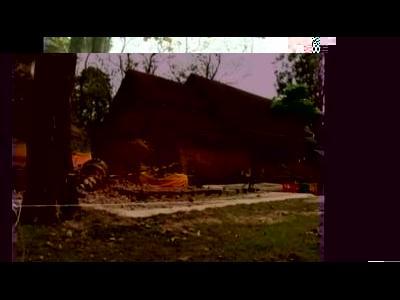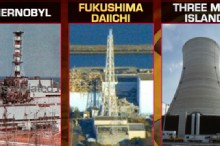 AP – A Japanese auxiliary multipurpose support ship, the Hiuchi, pulls a U.S. ship loaded with fresh water …
AP – A Japanese auxiliary multipurpose support ship, the Hiuchi, pulls a U.S. ship loaded with fresh water … SENDAI, Japan – With 50,000 troops stationed in Japan, the U.S. military responded quickly to the tsunami that devastated the northeast coast. Just one year after tensions over the U.S. bases forced out a Japanese prime minister, the relief mission is showing a new and welcome face of U.S. troops the Japanese have hosted — sometimes grudgingly — for decades.
Roughly 20,000 U.S. troops have been mobilized in "Operation Tomodachi," or "Friend." It is the biggest bilateral humanitarian mission the U.S. has conducted in Japan, its most important ally in Asia, and it is ramping up fast.
As logistics gradually improve, U.S. troops have been moving farther into hard-hit zones and providing tons of relief supplies and badly needed manpower to help the hundreds of thousands of Japanese whose lives were shattered in the March 11 disaster.
In a part of Japan that hosts few U.S. bases, the Americans in uniform are a high-profile presence.
"To be honest, I didn't think much about the U.S. troops until now," said Arika Ota, 29, who works at an amusement center in the coastal city of Sendai. "But when I see them working at the airport every day, I'm really thankful. They are working really hard. I never imagined they could help us so much."
The Sendai Airport cleanup is one of the troops' most visible — and successful — operations so far.
Sendai is the biggest city in the region hit by the tsunami and its airport was utterly destroyed. The grounds and runways were covered in mud, rubble and more than 1,000 vehicles that were tossed about by the sea. The first floor of the terminal building was caked in sandy sludge, its windows were shattered by the tsunami and its shops were a jumble of garbage and broken souvenirs.
Now, the runways are clear enough to handle large cargo planes, the tossed-about cars have been placed in rows and the second floor houses a command center.
Capt. Robert Gerbract, who is in charge of the U.S. Marines' cleanup operations, said when he arrived last week he felt like he had stepped back in time.
"It looked like if you had left an airport alone for 1,000 years. It was like an archaeological site. It was hard to figure out where to begin," Gerbract, an Iraq veteran from Wantaugh, New York, said as he looked out at the runway from the Marines' makeshift command center in the airport's departure lounge.
For Marines like Gerbract, it's a satisfying assignment.
"I'd much rather be carrying relief food packages than a rifle, to be honest," he said.
The Marines are just one facet of the U.S. operation.
• Within days of the tsunami, the USS Ronald Reagan was stationed about 100 miles (160 kilometers) off Japan's northeastern shore. It had to reposition itself due to radiation from the crippled Fukushima Dai-ichi nuclear facility but is now sending sorties to hard-hit towns. The U.S. Navy has 19 ships, 140 aircraft and 18,282 personnel assigned to assist in the operation. It is sending barges filled with freshwater to help cool the reactor site.
• The Air Force has opened its bases for relief flights. Its transport planes have flown dozens of missions and its fighters have flown over the devastation in search of survivors. Two of its aircraft have helped the Japanese monitor the nuclear plant.
• Nearly 500 soldiers with the U.S. Army in Japan, which has fewer troops here than the other branches, have delivered blankets and other supplies and are conducting support and refueling for military helicopter operations.
The U.S. forces stress that they are not taking a lead role. That is being done by Japan itself, which has mobilized more of its troops than at anytime since World War II.
"What we're doing is coordination with the Japanese army," said Gunnery Sgt. Leo Salinas, of Dallas, Texas. "Every mission we do is a bilateral mission. They are all Japanese-led and under Japanese initiative. These guys are our allies and, more than that, they are our friends. Whatever they want us to do, we will do."
The Japanese public is very pro-America and generally sees the military presence as a benefit.
But the relationship is complicated by a strong pacifist undercurrent in public opinion borne from World War II. Japan's own military is strictly limited to national self-defense and many Japanese feel the U.S. presence here could make their country a target or draw Japan into a conflict involving American troops over Taiwan or other flash points.
Even at the shelters where crucial U.S. help is arriving, some Japanese expressed mixed feelings about the troops.
"I feel thankful that they are helping us," Yoko Hiraoka, 40, said as a convoy of U.S. Marines arrived at her evacuation center in the city of Higashi Matsushima on Saturday. The Marines set up showers, which the evacuees have lacked for two weeks.
"But I still have reservations about having U.S. troops in Japan," Hiraoka said. "I'm happy today, and I appreciate their help, but it doesn't fundamentally change the way I feel."
The U.S. troops are stationed throughout Japan under a mutual security treaty signed in the 1960s. Tokyo strongly supports the alliance, because it saves Japan money on defense and serves as a powerful deterrent force in the region, particularly as China's military strength and economic clout rise.
But opposition to the bases is high on the southern island of Okinawa, a strategically important outpost that hosts more U.S. troops than any other part of Japan.
That concentration of forces — including the Marines who make up the bulk of the on-the-ground assistance here — is an endemic source of friction with local residents, who complain of overcrowding, the danger of accidents and base-related crime.
Tensions between the Marines and Okinawans boiled in 1995, when two Marines and a sailor raped a local schoolgirl. The outrage from that attack led to an agreement that the U.S. military would reduce its presence in Okinawa.
Both sides agreed to close down Marine Corps Air Station Futenma, an airfield in the middle of a heavily populated area that has long symbolized the military burden for Okinawans.
But after more than a decade, the base remains open. Washington wants to replace Futenma with another facility on Okinawa before relocating 8,500 Marines to the U.S. territory of Guam, as it had agreed to do by 2014.
Okinawans have strongly opposed the construction of any new facilities.
Unable to make any headway in the dispute, Prime Minister Yukio Hatoyama was forced to resign last year.
Koichi Nakano, a political science professor at Tokyo's Sophia University, said he believes the disaster relief mission will help build goodwill, but does not expect it to have much impact in Okinawa.
"The goodwill of the Japanese to the Americans ... even to the American presence in Okinawa, has not really been a problem of the mainland," he said. "The problem remains Okinawa. The Okinawans will be saying, 'Of course it's good what the Americans did, but why do the bases have to be in Okinawa?'"
 Play Video Earthquakes Video:Breach feared at Japanese nuclear plant AP
Play Video Earthquakes Video:Breach feared at Japanese nuclear plant AP  Play Video Earthquakes Video:Deadly Earthquake causes devastation in Myanmar AP
Play Video Earthquakes Video:Deadly Earthquake causes devastation in Myanmar AP  Play Video Earthquakes Video:Aftershocks in Thailand day after quake Reuters
Play Video Earthquakes Video:Aftershocks in Thailand day after quake Reuters http://news.yahoo.com/s/ap/20110326/ap_on_re_as/as_japan_earthquake_us_military


